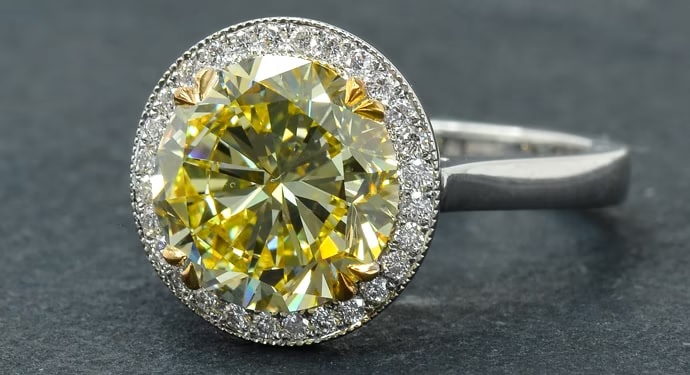The custom of giving a diamond ring as a sign of engagement has permeated every aspect of our culture. These beautiful diamonds have been worn on the fingers of engaged couples for decades as a symbol of love, loyalty, and the promise of a shared future. What about diamonds, though? What is it about these priceless stones that makes them such a great option for rings that symbolize engagement? In order to unravel the puzzle, we must examine the lengthy history, cultural significance, and promotional efforts that have all contributed to the continued appeal of diamond engagement rings.
History of Diamond Engagement Rings
The first-ever diamond engagement ring was ordered in 1477 by Austria’s Archduke Maximillian for his fiancée, Mary of Burgundy. This caused European royalty and aristocracy to adopt a tradition of wearing diamond rings.
The sentimental Victorians made elaborate designs for engagement rings fashionable, combining enamels, precious metals, and diamonds with other jewels. These rings were known as “posey rings” since they were frequently made in the form of flowers. Edwardian-era diamond rings carried out the custom of putting diamonds in filigree settings and combining them with other jewels.
Why Diamonds?
Compared to now, engagement rings were much less romantic in the past. They were truly an ownership symbol in the past. To indicate that they belonged to their husbands, wives received metal rings to wear at home and gold rings from their spouses. This custom has developed throughout time and is now associated with dedication and love.
The diamond industry promoted diamonds as “The” engagement stone that everyone should own once they were found to be abundant in South Africa. Diamonds were the first gemstone to be used in an engagement ring. Things slowed down during the Great Depression, but as the economy recovered, they quickly resumed.
Rings for Engagement Today
Nowadays, engagement rings made of diamonds are present in almost every culture. But as times change, individuals are embracing a new world of individualism and straying further from the customs of the past.
Engagement rings now stand for commitment and relationship, although they formerly represented ownership. It is reasonable that traditions change in a culture that celebrates all forms of love. The ideal substitute for the conventional white diamond engagement ring is fancy-colored diamonds.
Given the abundance of hues, forms, and sizes, it is not surprising that more and more couples are using color to symbolize their love.
Cultural and Symbolic Significance
Diamond engagement rings have become more significant culturally and symbolically, surpassing marketing strategies and historical tendencies. Here are a few reasons why diamonds continue to hold a special place in the hearts of lovers everywhere:
- Enduring Love Symbol
Diamonds are durable, which makes them a perfect symbol of lasting love. Couples have responded sincerely to the idea that a diamond is eternal, emphasizing the enduring nature of their commitment.
- Social Status & Success
If you look into the past, diamonds have been associated with wealth and societal success. One way to look at a diamond engagement ring is as a tangible representation of a couple’s social and economic standing and ability to support one another. It’s more like a representation of the mutual bond.
- Rite of Passage
In Western societies, giving and receiving an engagement ring is frequently considered a rite of passage. It represents the start of a new phase in a couple’s life, moving from courtship to an official marriage vow. Also, proposing with a diamond ring often measures the love the man has for his woman, though this is a very subjective opinion.
- Sentimental Worth
Diamonds are often associated with sentimentality, particularly when inherited through the generations. Family heirlooms enhance the emotional significance of a diamond engagement ring by fostering a sense of continuity and tying the past to the present.
Conclusion
Through the years, history, marketing, cultural values, and societal trends have influenced the custom of exchanging diamond engagement rings. What started out as a marketing strategy for De Beers in the middle of the 20th century has developed into a deeply ingrained cultural norm, with diamonds standing for prestige, enduring love, and loyalty.

